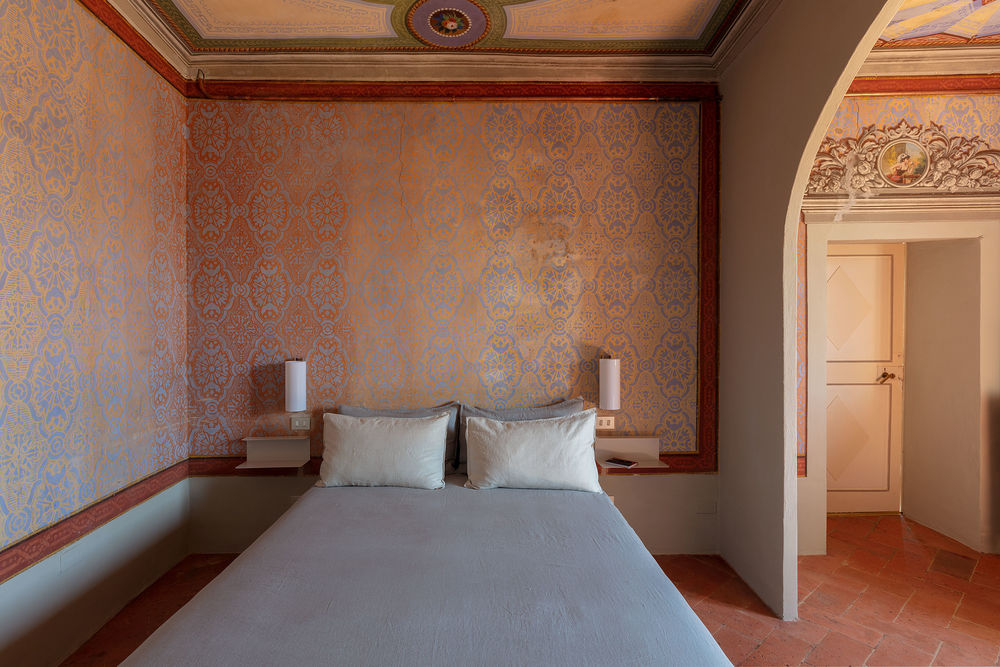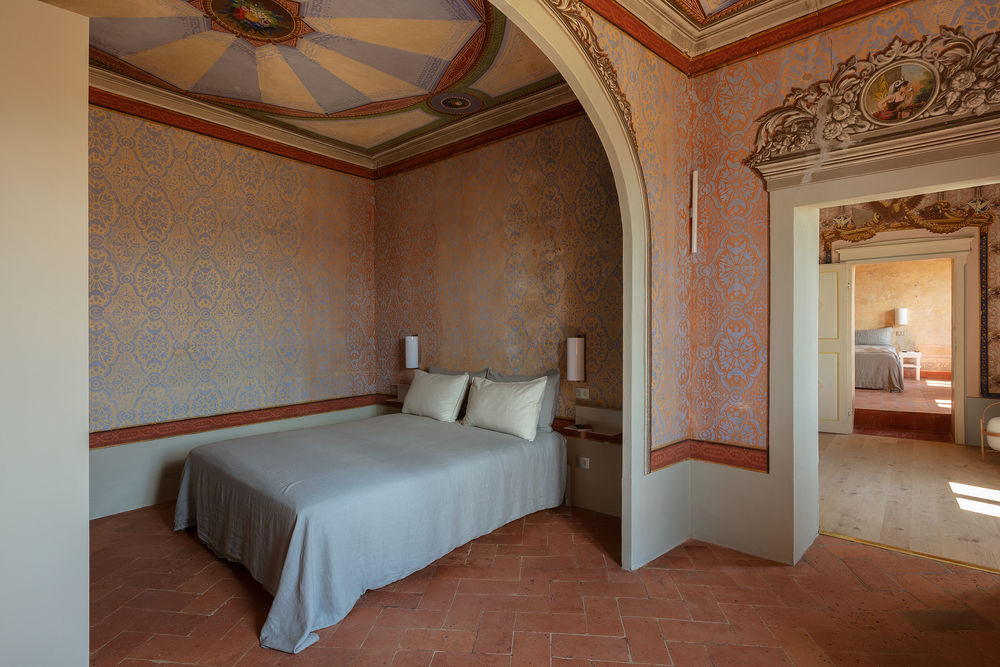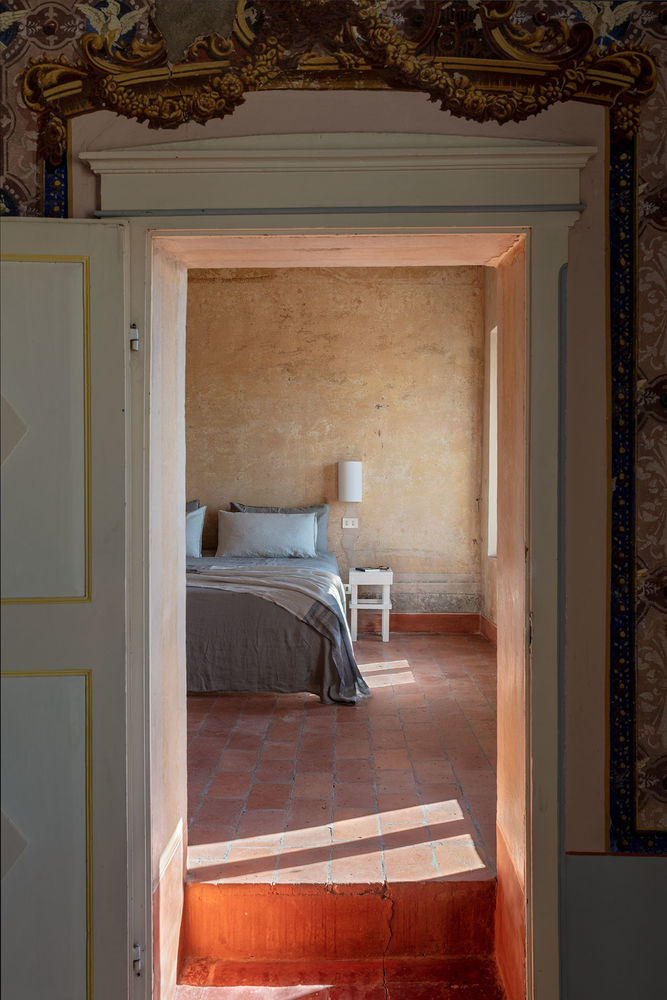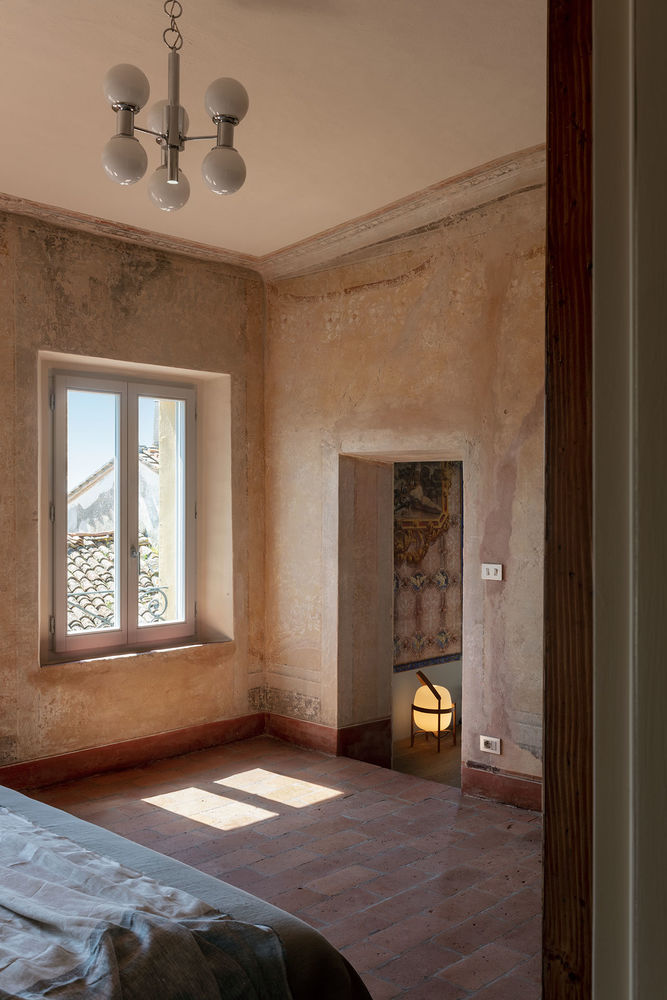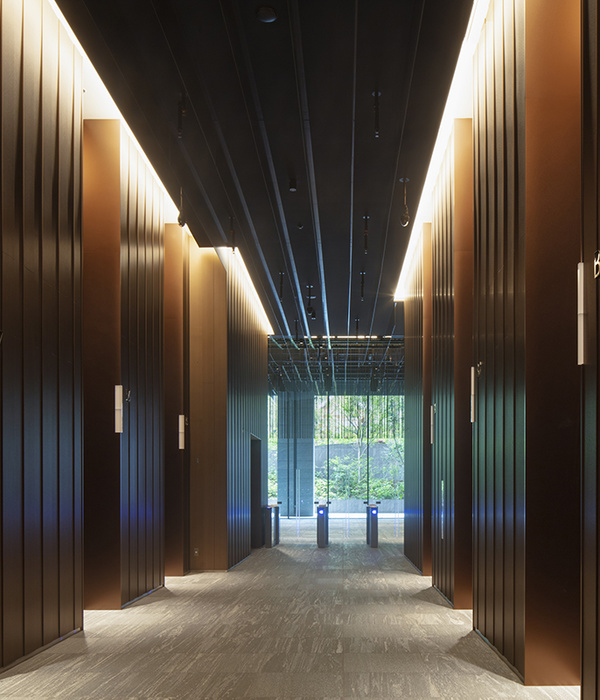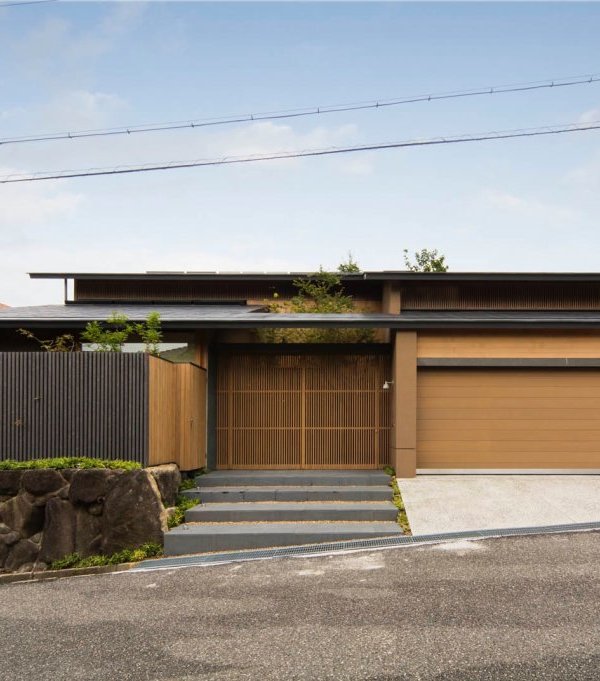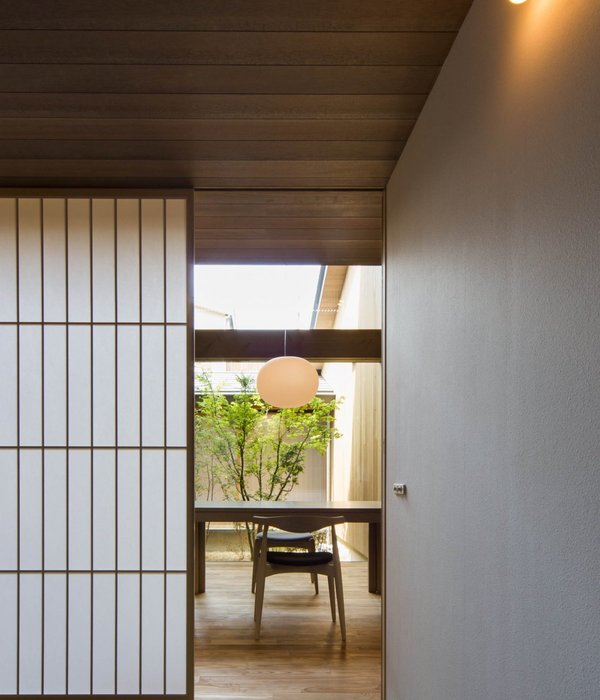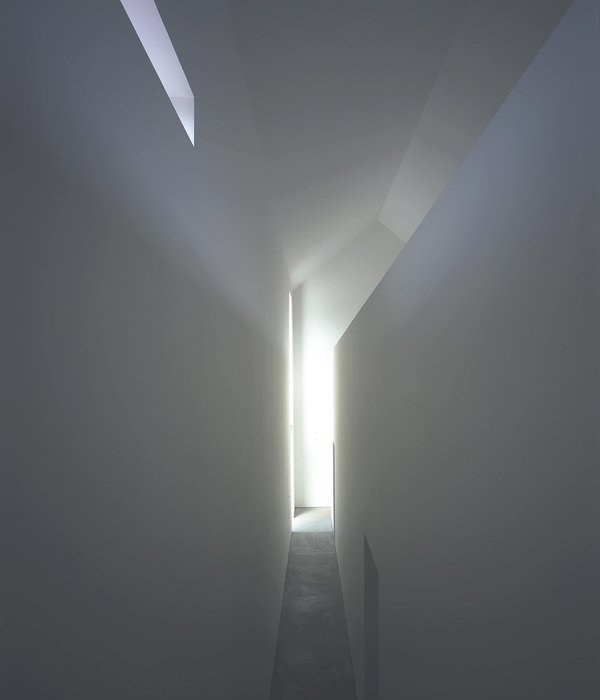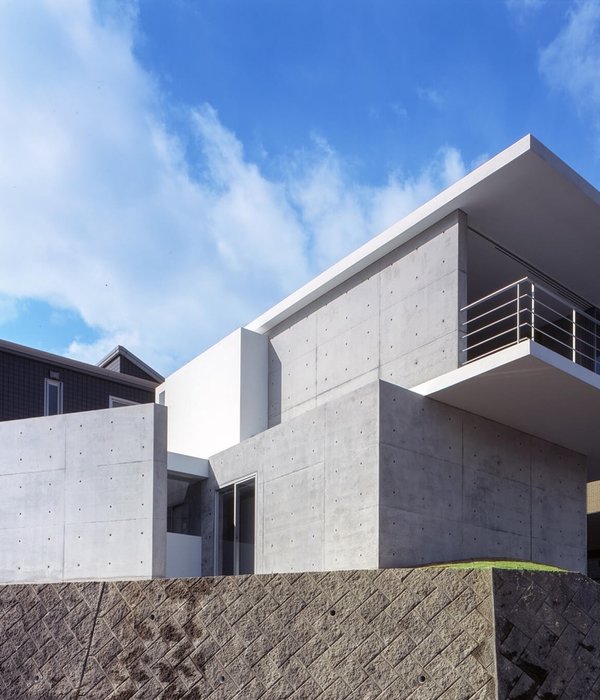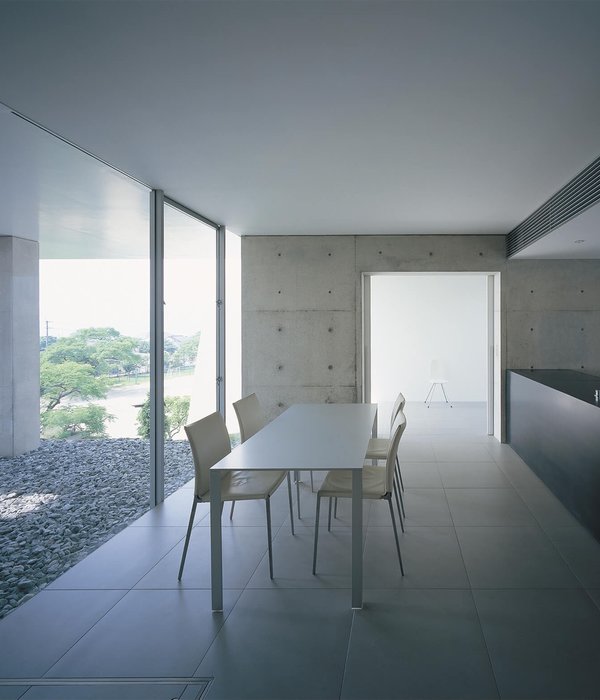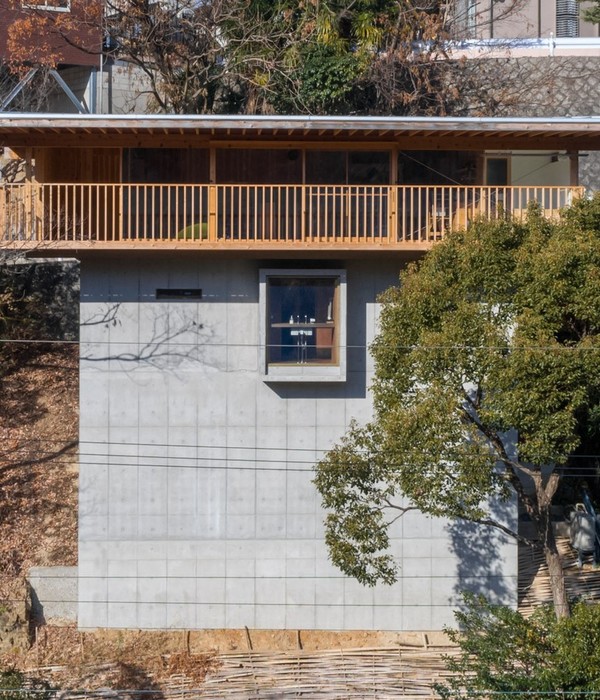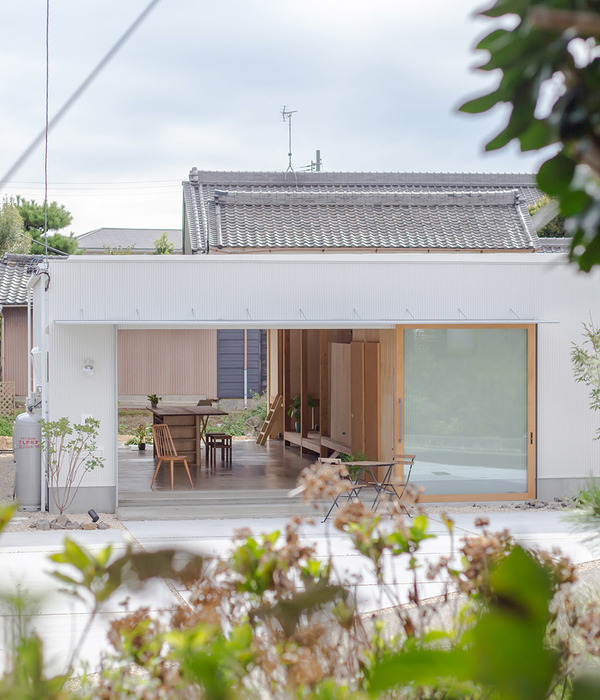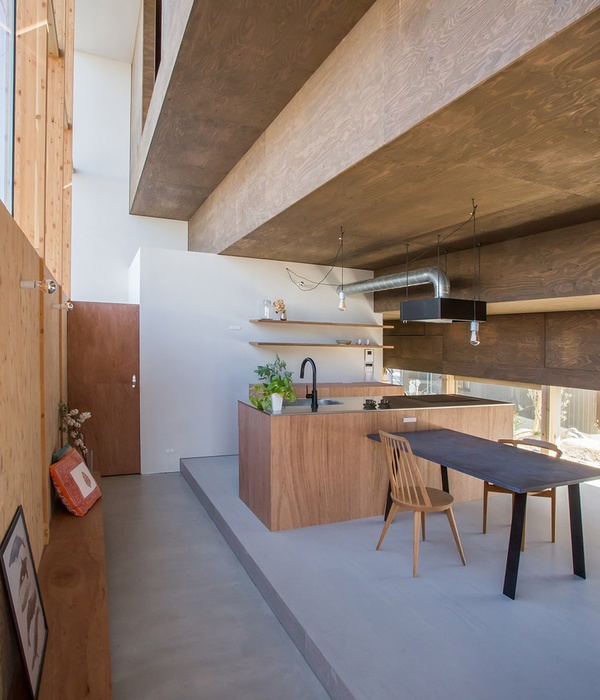19世纪的壁画将托斯卡纳的一个温和的度假住宅变成了一个建筑的Palimpsest
Dotted with vineyards, olive groves, cypress trees, castles and medieval villages, it’s hard not to fall in love with Val d'Orcia, a UNESCO World Heritage Site in southern Tuscany, Italy. This is exactly what happened to the Italian-Spanish owners of Umberto121, a holiday residence in the small village of Montisi, population 300, who bought the property in the summer of 2020 with the intention to remotely renovate it, only to decide a few months later to permanently move there from Barcelona – not an easy decision for a family with two three- and five-year-old daughters. Once there, they oversaw every stage of the property’s renovation in collaboration with Barcelona-based interior designers Montsant Moreno, stripping down recent interventions and restoring original features where possible “in search of the essence of the house”.
The outcome of such an “archaeological approach” is a treasure trove of period details such as 19th century frescoes and 1930s terrazzo floors that constitute a palimpsest of the centuries-old house’s history. Complemented by an eclectic selection of antique and vintage furniture sourced from local markets and antique dealers, the residence, which now also functions as a holiday rental, is a soulful Tuscan retreat with a distinct sense of place.
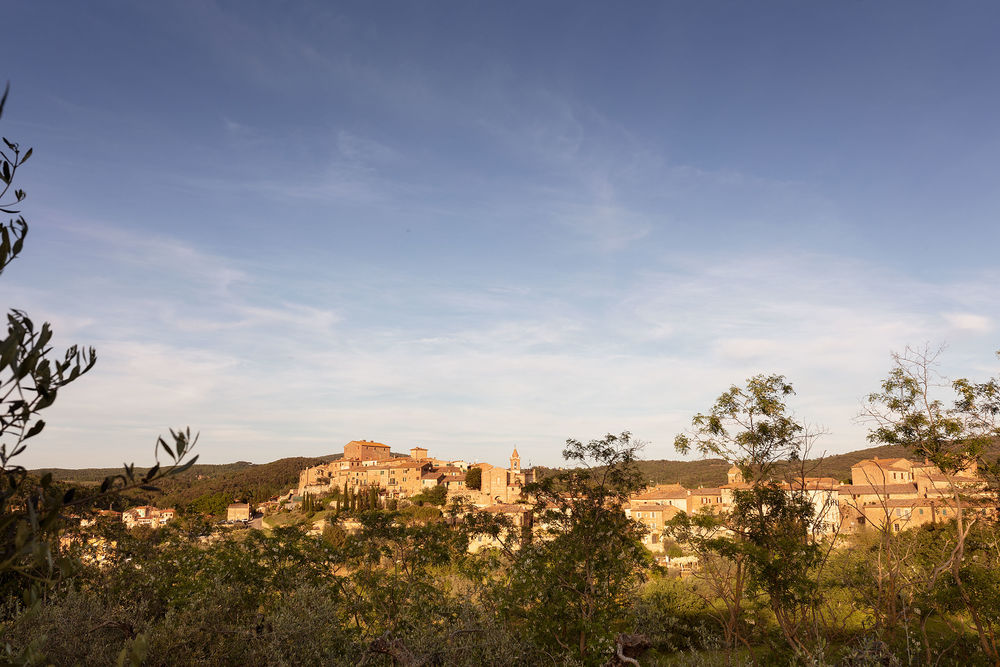
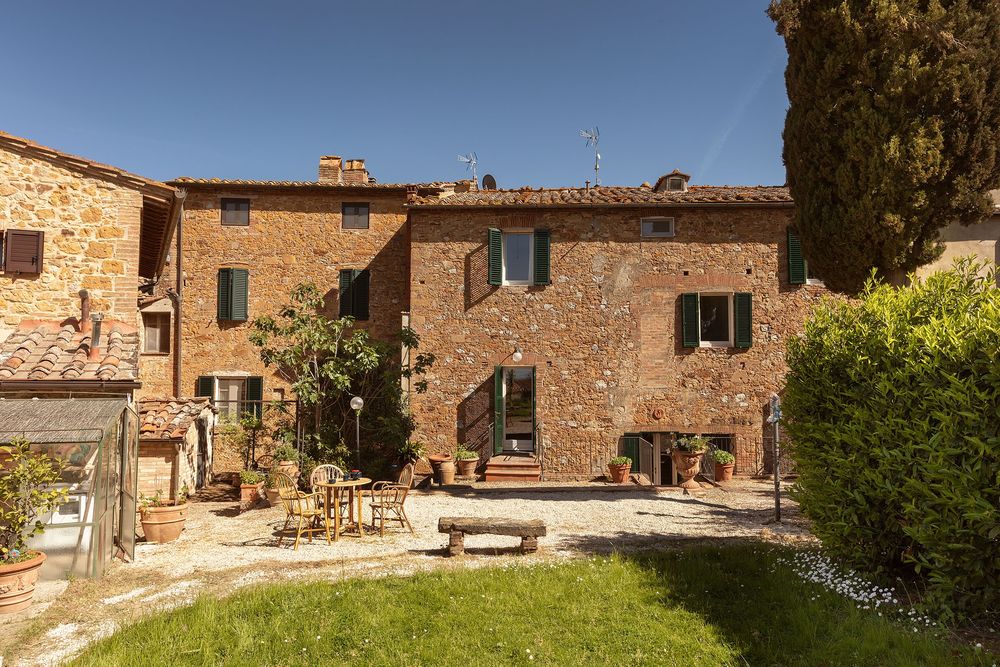

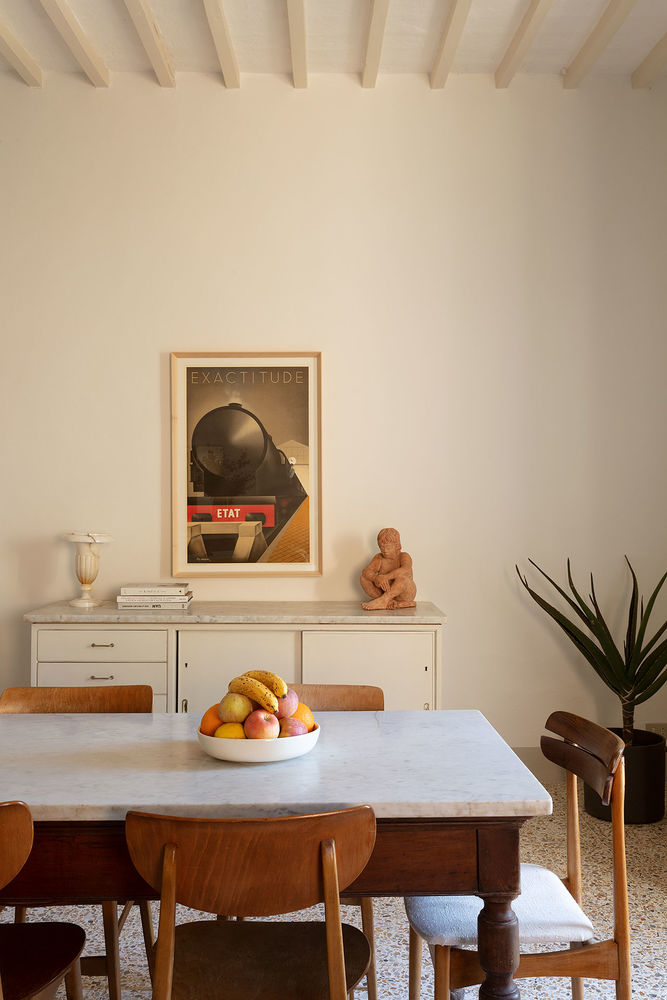

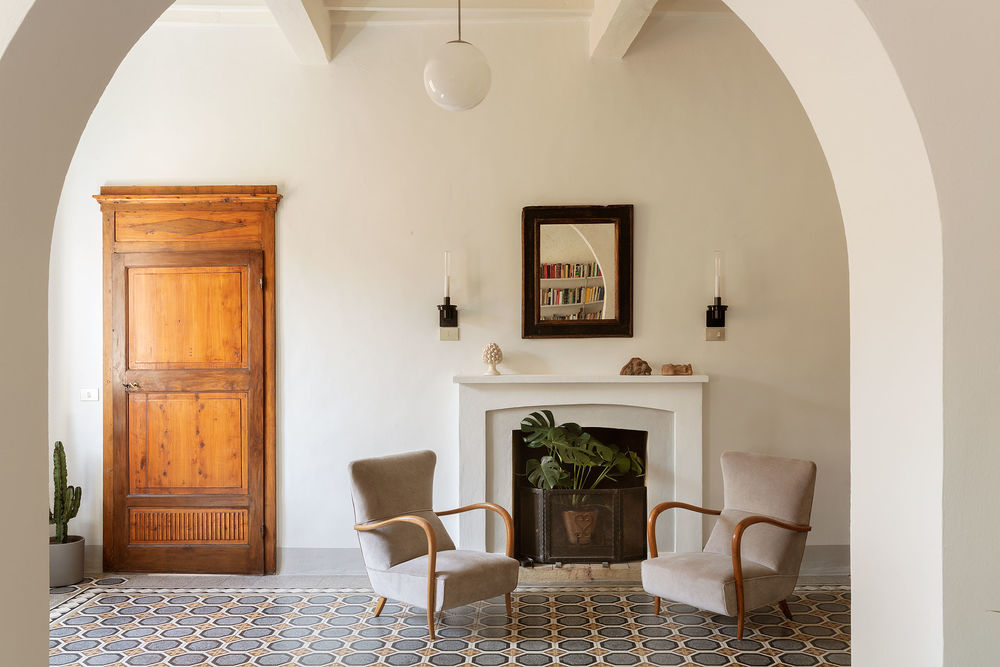
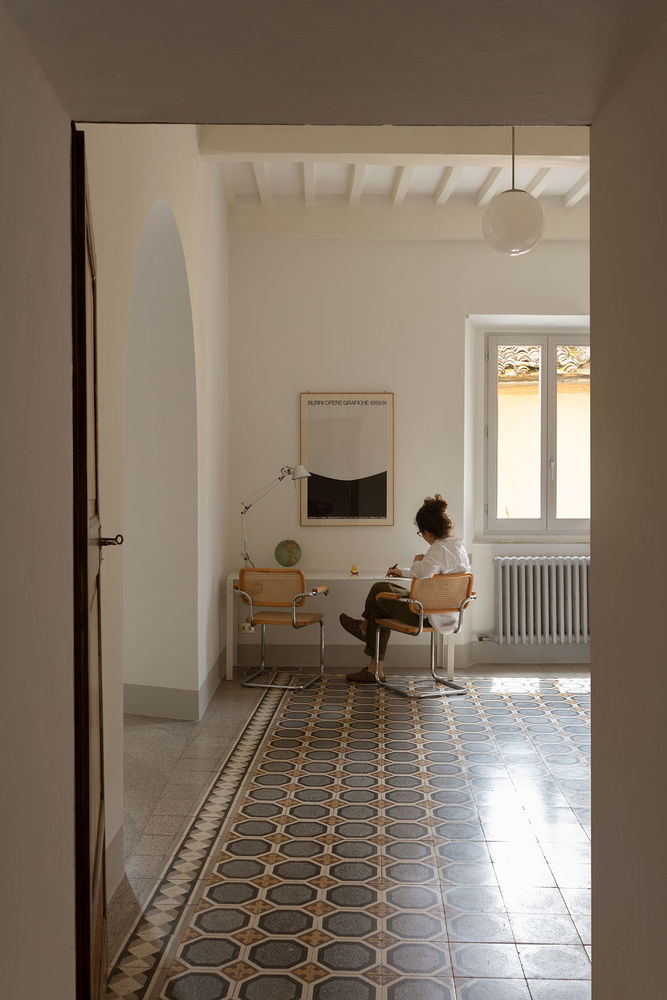
Located in the historic heart of the village, Umberto121 takes up two levels of a three-storey building that dates back from the 14th century. On the first floor, the communal areas include a living room, a study, a dining room and a kitchen, the latter two enjoying access to the back garden, as well as a bedroom with en-suite bathroom. Four more bedrooms are located on the second floor, where some of the most elaborate frescos can be found.
Having gone through numerous alterations in the centuries that followed, the owners’ intention was to restore the building’s storied character prior to more recent interventions that attempted to modernize it. Meticulously refurbished ceiling beams, wood panel doors and decorative stonework go a long way to that effect but undoubtedly it is the beautiful frescos that most evocatively convey the house’s past.
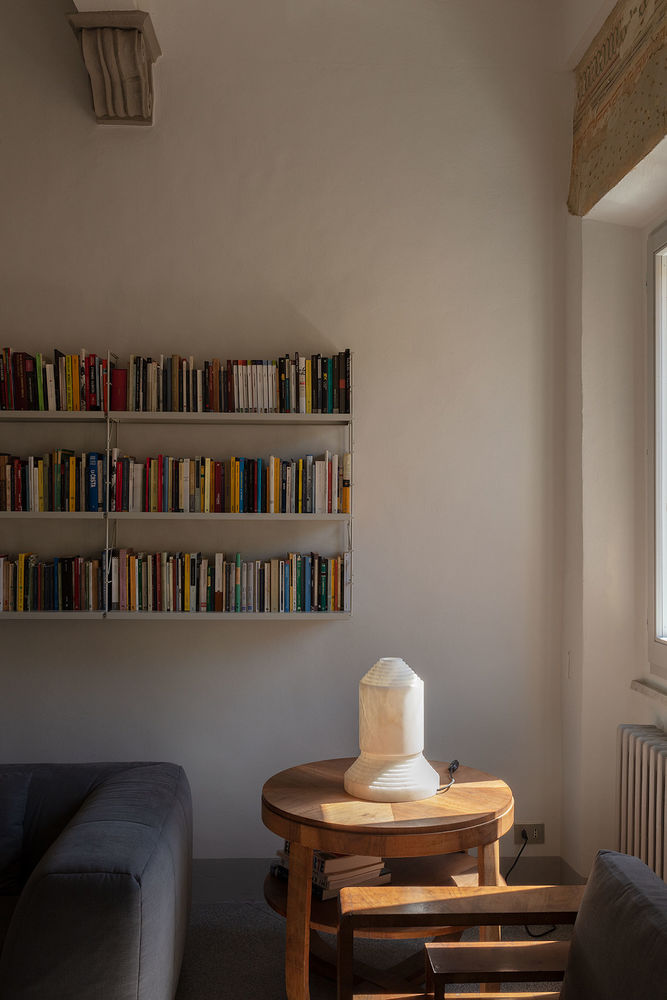





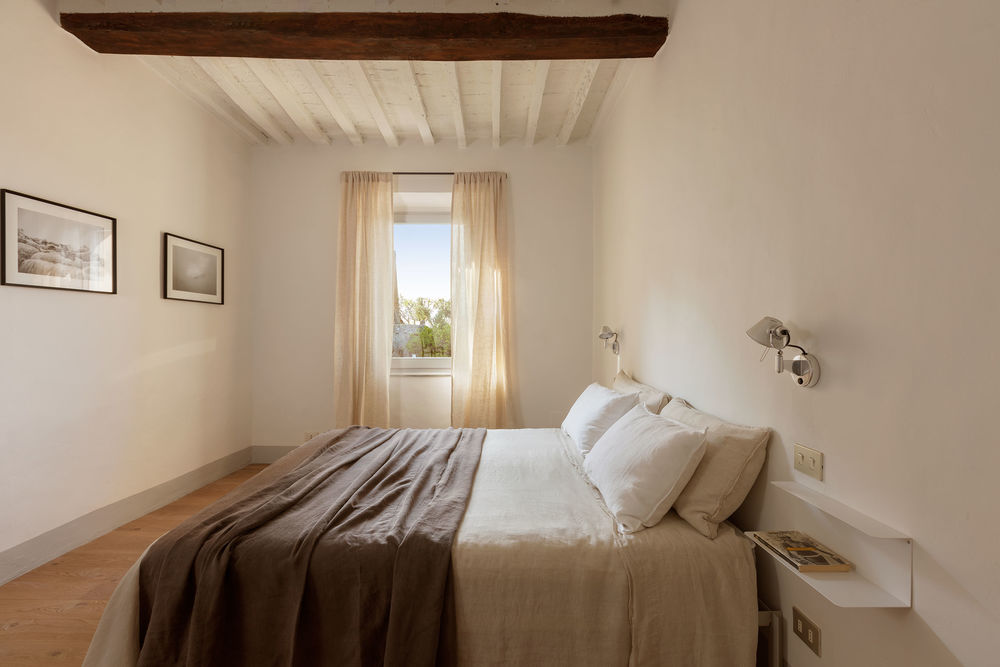


"When we bought the house, the walls of two of the rooms were covered with frescoes, but we knew there had to be more," the owners say, and indeed there were, quite a few as it turned out. From trompe l'oeil decorative details, to ornate floral patterns, to weathered fragments, the diverse collection of frescos that were uncovered imbue the interiors with a sense of artistic flair and nostalgic sophistication. Another gem they uncovered are the graniglia (terrazzo) floor tiles which date back to the 1930s. Featuring, in some cases, Art-Deco-inspired patterns, the polished terrazzo floors further add to the house’s charm, while oak parquet, installed where the terrazzo was beyond salvation, imbues the house with warmth.
In order to enhance the house’s historical charm, as previously mentioned, the owners have assembled an eclectic collection of antique and mid-century vintage furniture which they handpicked in local markets and Italian and Spanish merchants. Mixing époques and styles, the collection nevertheless comes harmoniously together, with each room boasting its own character in reflection of the property’s multi-layered architectural heritage.


